Ever tried to blaze through minor pentatonic licks, only to find your fingers tangled and your timing off? You’re not alone. Many passionate guitarists hit a wall when chasing speed—notes blur, rhythm falters, and the groove gets lost. But there’s a way forward. As a seasoned guitarist deeply rooted in the blues and rock traditions, I’ve distilled years of stage and studio experience into six actionable, progressively challenging minor pentatonic licks. Each one is designed to build your speed, control, and style—step by step—so you can finally break through that speed barrier with confidence and clarity.
Key Takeaways
- Progressive skill-building through six minor pentatonic lick examples: Develop speed and control step-by-step without overwhelm.
- Expert practice tips and pro techniques like economy picking and legato: Actionable methods to improve efficiency and precision.
- Stylistic insights from iconic guitarists integrated into exercises: Add authentic flavor and personality to your playing.
The Minor Pentatonic Scale: Your Speed-Building Foundation

If you’re aiming to master fast guitar licks, the minor pentatonic scale is your engine room—the powerhouse beneath countless legendary solos. From Charlie Christian’s jazz innovations to the expressive fire of Hendrix, Page, and Wylde, this five-note scale (in A minor: A, C, D, E, G) has fueled decades of iconic rock and blues. Why? Its streamlined structure makes it perfect for fast, expressive playing—no wasted notes, just pure melodic muscle. For a detailed breakdown of finger placement and scale patterns, how to play the A minor pentatonic scale on guitar is an excellent resource that complements this foundation.
Before you race ahead, remember: slow, deliberate practice is your foundation. Think of each metronome click as a brick, laying the groundwork for reliable speed. We’ll use six minor pentatonic licks, each with a specific technical focus, to progressively build your speed and control—without sacrificing your groove or tone.
Video tutorial: Minor Pentatonic Scale Basics
Example 1: Ascending and Descending A Minor Pentatonic – Building Your Speed Base
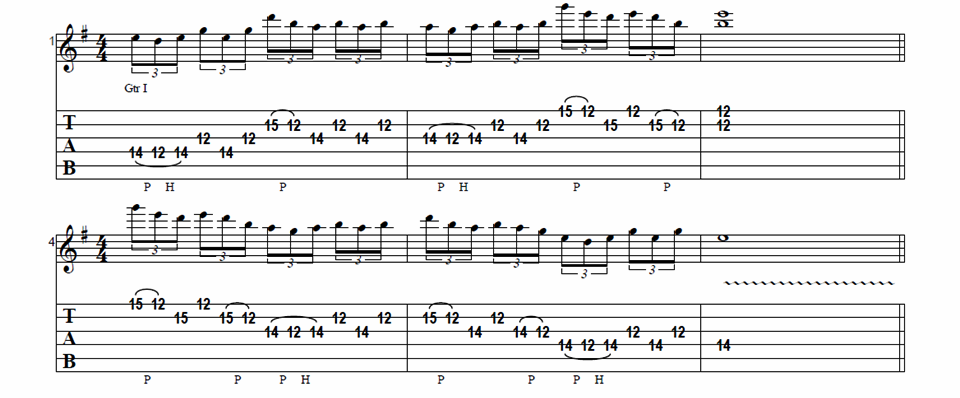
Our journey begins with a foundational lick: ascend four notes up the A minor pentatonic, then cascade down six notes. This pattern is the runner’s warm-up—steady at first, then gradually gaining pace. The focus here is synchronization: your picking hand and fretting hand must move as one.
- Structure: Start on the 5th fret of the low E string, ascend (A–C–D–E), then descend (E–D–C–A–G–E).
- Techniques: Alternate picking, basic hammer-ons and pull-offs.
Practice this lick slowly, aiming for absolute clarity and even timing. As you get comfortable, nudge the tempo upward—your initial goal is a crisp 120bpm, but feel free to push further as your control improves. To deepen your command of alternate picking, consider exploring 10 Steps to Master Alternate Picking Technique For Guitar, a thorough guide that can help refine your precision and speed.
Metaphor: Imagine the lick’s momentum like a sprinter accelerating off the blocks—steady, then flying down the track.

Video tutorial: 5 Alternate Picking Licks to Build Speed
Example 2: Jimmy Page’s Fast Minor Pentatonic Style – Precision in Motion
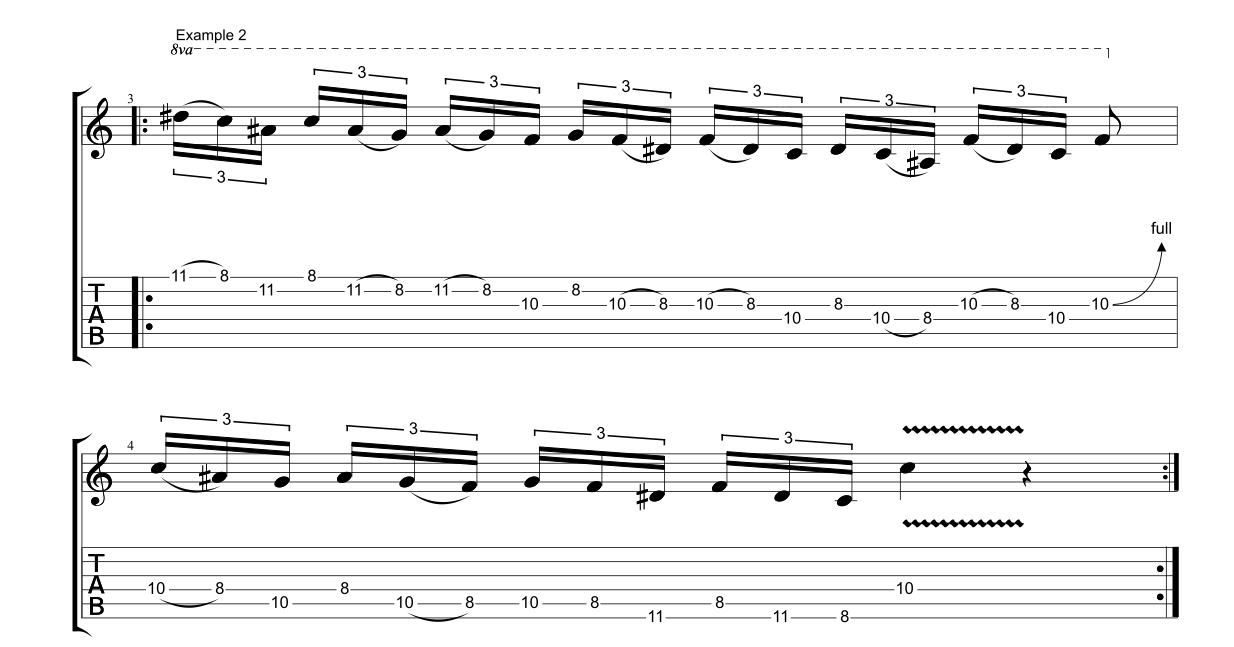
Now let’s inject some classic rock attitude. This lick channels Jimmy Page’s signature fast minor pentatonic approach: a looping bend and pull-off phrase, followed by a descending run in groups of six. The challenge? Keeping bends precise and pull-offs clean, even at speed.
- Structure: Bend the 7th fret on the G string (D to E), pull off to the 5th, then descend through the scale in six-note bursts.
- Techniques: String bending, pull-offs, alternate picking.
Visualize the bend as a vocal cry—full of emotion, but always in tune. Pull-offs should let each note sing smoothly, maintaining the lick’s flow. Use slow repetition to build muscle memory, then gradually raise the tempo. For deeper insight into Jimmy Page’s playing style and a detailed breakdown of his techniques, the ultimate Jimmy Page guitar lesson offers a comprehensive guide that perfectly complements this exercise.
Metaphor: Think of pull-offs as letting each note “ring out” like a singer holding a note at the end of a phrase.

Video tutorial: Jimmy Page guitar lick in fast minor pentatonic style
Example 3: Zakk Wylde and John Sykes Style – Machine-Gun Alternate Picking
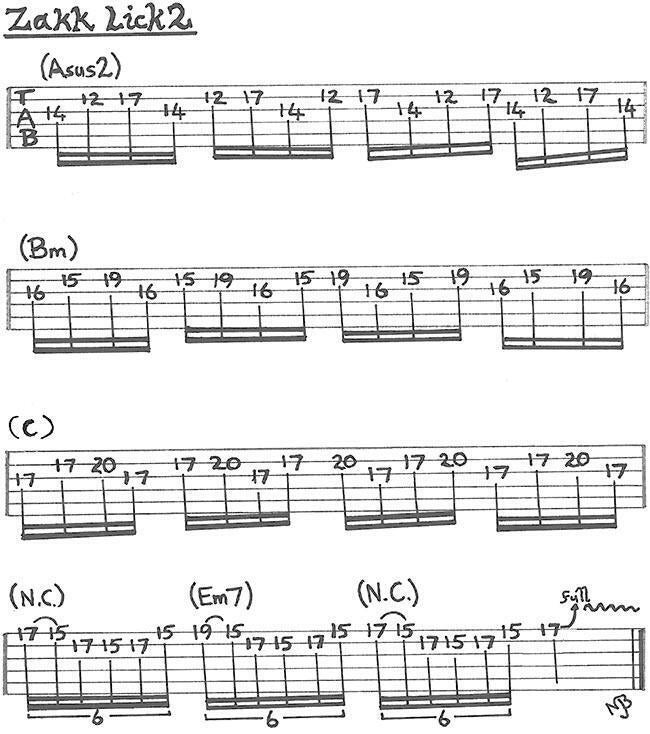
This lick is all about aggression and relentless motion. Inspired by Zakk Wylde and John Sykes, we’ll join adjacent pentatonic boxes using rapid alternate picking—think of your pick as a bullet skipping across the strings for a machine-gun attack.
- Structure: Move between A minor pentatonic positions, picking six notes per string, shifting up and down the fretboard.
- Techniques: Fast alternate picking, pick slanting for string crossing.
Accent the first downstroke in each group of six—these are your heartbeat pulses, keeping the rhythm alive. Use pick slanting to avoid getting “stuck” between strings, maintaining fluidity as you move at speed. For guitarists eager to build this essential picking precision and control, 20 essential picking exercises for guitar offer a thorough and practical path to mastery.
Metaphor: Each accented downstroke is like a drummer’s kick drum—steady, powerful, and driving the groove.

Video tutorial: Zakk Wylde Style Two-String Pentatonic Alternate Picking
Example 4: Michael Schenker and Marty Friedman Style – Economy Picking and Pull-Offs
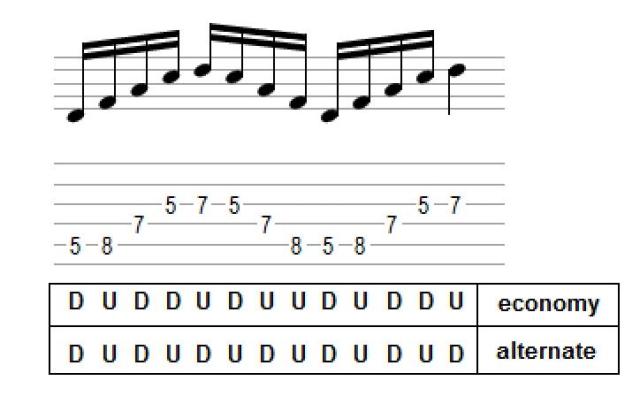
Ready for a new level of efficiency? This lick blends rapid pull-offs with economy picking—a technique where you “take the express lane,” using one smooth stroke to cross multiple strings. Picture your pick as a sweeping brush, painting notes cleanly and quickly. For a deeper understanding of this technique and how to implement it smoothly, check out how to use economy picking: a beginner’s guide to an … – Guitar World.
- Structure: Combine descending pull-offs on one string with a single, sweeping downstroke to the next.
- Techniques: Economy picking (sweep picking), pull-offs, rhythmic grouping.
Practice the picking pattern slowly: use upstrokes for higher notes, then sweep down for lower strings. Gradually boost your tempo, aiming for a seamless 160bpm+ flow without tension or sloppiness.
Metaphor: Economy picking is like merging onto a highway’s fast lane—minimal effort, maximum speed.

Video tutorial: Economy Picking Basics
Example 5: Nuno Bettencourt and Paul Gilbert Style – Power Pentatonic Shredding
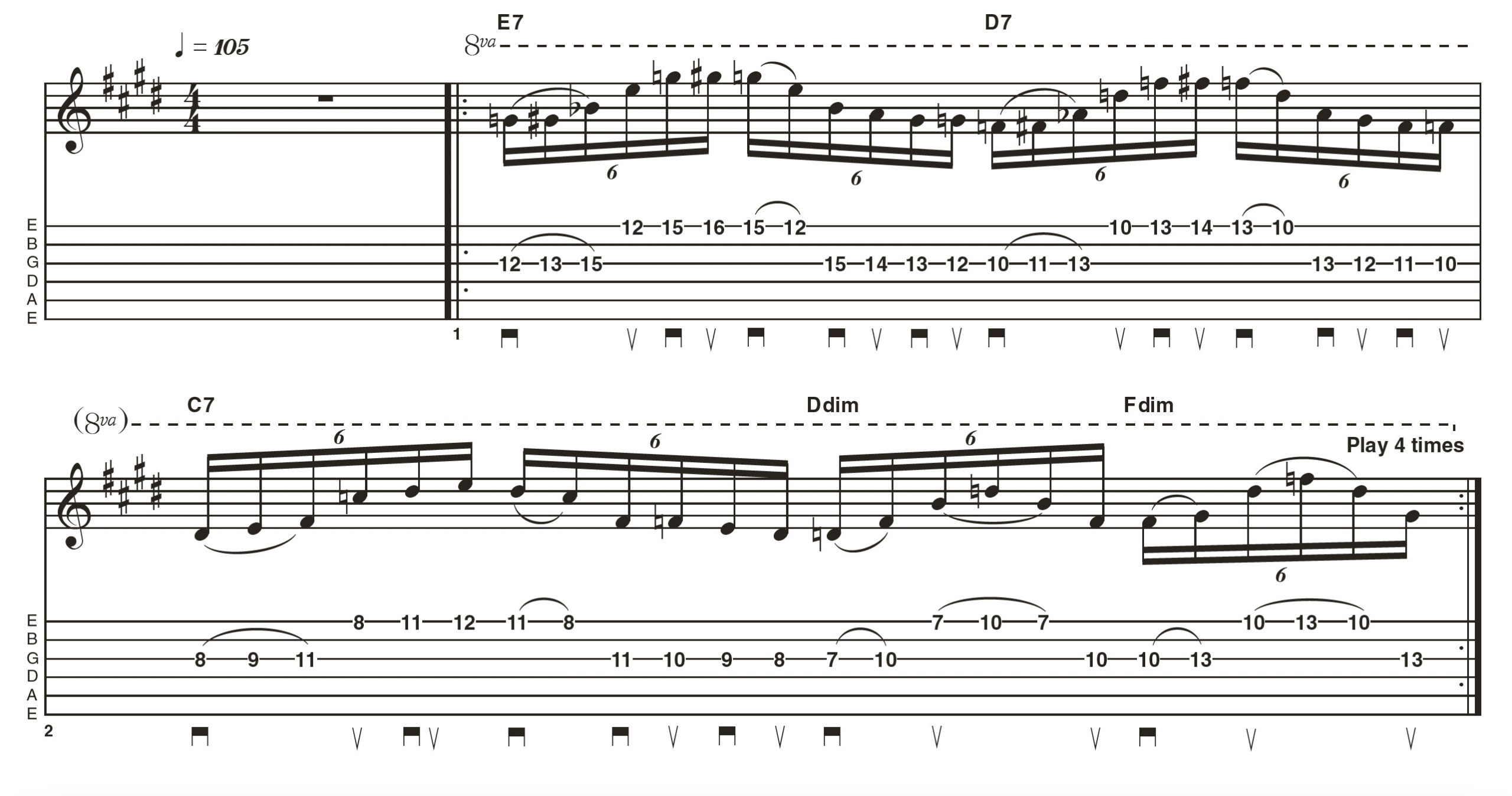
Now we enter shred territory. This modern lick features three-notes-per-string pentatonic shapes, fast legato, and wide stretches—hallmarks of Nuno Bettencourt and Paul Gilbert’s explosive style. Think of legato runs as water flowing—smooth, continuous, unbroken by harsh picking. To deepen your understanding of how legato technique has evolved over decades and to truly master this fluid style, explore 60 years of legato guitar in 5 generation-spanning lessons.
- Structure: Three notes per string (A–C–D, E–G–A, etc.), using hammer-ons and alternate picking.
- Techniques: Legato (hammer-ons/pull-offs), alternate picking, wide finger stretches.
Drill six-note groups, focusing on finger independence and smooth transitions. Begin with all notes picked, then try half-picked/half-hammered for a liquid, modern sound. Wide stretches may feel like reaching for the stars—but they’ll expand your fretboard command and dexterity.
Metaphor: Imagine your fingers gliding across the fretboard like a stream over smooth rocks—uninterrupted and fluid.

Paul Gilbert Signature Guitar Licks Tutorial
Example 6: Minor Pentatonic Mastery – Synthesizing Speed and Style
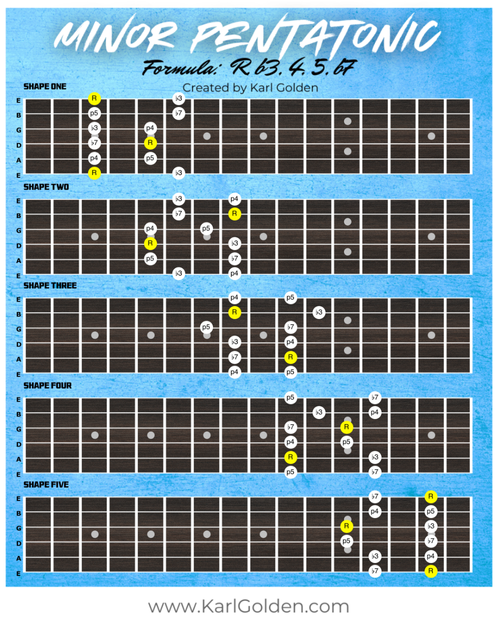
This final example is where it all comes together—a dynamic solo passage that blends the techniques and flavors from the previous licks. It’s your playground for creativity: mix alternate picking, legato, economy picking, rhythmic groupings, and expressive bends. The aim is not just speed, but a personal stamp on your minor pentatonic licks.
- Structure: Begin with a rapid descending run, pivot to a legato burst, add a bluesy bend, then finish with a rhythmic alternate picking sequence across boxes.
- Techniques: All of the above—alternate picking, legato, economy picking, bends, rhythmic phrasing.
Experiment with where you accent notes, how you group rhythms, and which techniques you combine. Think of this solo as a recipe—adjust the ingredients (techniques, rhythms) to your taste. Rhythmic variation is your paintbrush, coloring your solo canvas with unique hues. For players eager to expand their understanding of improvisation techniques beyond these examples, this curated guide to books on improv for guitarists and bassists is an excellent resource to deepen your skills and inspire your creative expression.
Metaphor: Each rhythmic twist is a new color on your palette—layer them for a solo that’s uniquely yours.

Video tutorial: The BEST Minor Pentatonic Soloing Techniques
Making It Your Own
Mastering faster minor pentatonic licks isn’t just about chasing speed—it’s about crafting your own expressive voice. The journey from foundational scale runs to advanced techniques like economy picking, legato, and rhythmic phrasing empowers you to move beyond imitation and into true creativity. Remember, every iconic guitarist—from Page to Gilbert—started with the same five notes, but made them unforgettable through personal style and relentless practice.
So, keep experimenting with these licks. Change up the rhythms, try new groupings, and blend techniques until your fingers and ears find something uniquely yours. The minor pentatonic scale is your toolkit—how you build with it is up to you.
What’s your favorite minor pentatonic lick to play fast, and how have you made it your own? Share your breakthroughs, challenges, and favorite variations in the comments below—let’s build a community of practical players growing together!